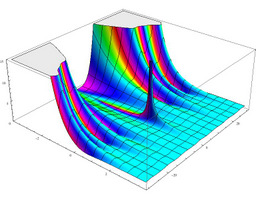

The main strength of our contribution lies in the fact that the scheduling is set in a fully distributed way and considers non-uniform power ranges, and it can therefore fit the sensor network setting. Precisely, we show that it is possible to emulate a 1/radic(n ln n)-UDG that satisfies the constraints of the SINR over any set of n wireless nodes distributed uniformly in a unit square, with only a O(ln 3 n) time and power stretch factor. In this paper, we demonstrate how careful scheduling of the nodes enables the two models to be combined to give the benefits of both the algorithmic features of the UDG and the physical validity of the SINR. Nevertheless, due to its complexity, this latter model has been the subject of very few theoretical investigations and lacks of good algorithmic features. The SINR model focuses on radio interferences created over the network depending on the distance to transmitters.
#UNIT DISK GRAPH PLUS#
For this purpose, the signal interference plus noise ratio model (SINR) is the more commonly used model. However, such a connectivity requirement is basically not compatible with the reality of wireless networks due to the environment of the nodes as well as the constraints of radio transmission. In this pursuit, we propose the following unit disk graph-based approach: we first normalize the values for the node-level metrics (using the sum of the squares approach) and construct a unit disk graph of the network in a coordinate system based on the normalized values of the node-level metrics. In a rho-UDG, two nodes are connected if and only if their distance is at most rho, for some rho > 0. As a tractable mathematical object, the unit disk graph (UDG) is a popular model that has enabled the development of efficient algorithms for crucial networking problems. Modeling communications in wireless networks is a challenging task, since it requires a simple mathematical object on which efficient algorithms can be designed but which must also reflect the complex physical constraints inherent in wireless networks, such as interferences, the lack of global knowledge, and purely local computations.


 0 kommentar(er)
0 kommentar(er)
